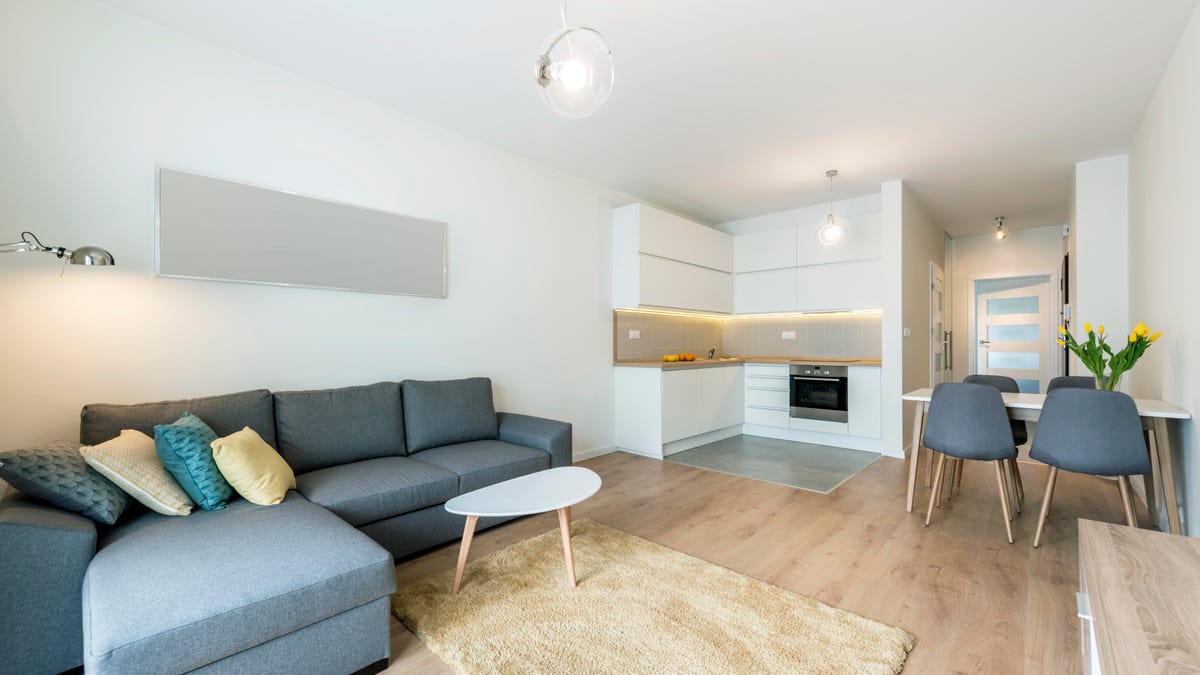Be your own lighting designer with these layered light basics
Getting the light just right in your home isn't as complicated as it seems. Follow these simple rules for a perfect ambience.

The simplest things can make or break the design of a room. You might have beautiful furniture, art and flooring, but if the ambience still feels off, lighting is the likely culprit. Light inside our homes does more than just help us see. It sets a mood and creates certain feeling.
Often ignored, layered lighting is one of the most useful tools in interior design. Lighting designers divide light into three layers: ambient, task and accent. With these three layers carefully curated, you'll have a balanced and comfortable living space. Let's take a look at each of these layers and break down what matters when it comes to lighting up your life.
Ambient
Ambient lighting is the main source of light in a room. This can come from floor lamps, recessed lights, chandeliers or ceiling fans. It's also the base layer and foundation on which you'll build the rest of your lighting design. Ambient light should fill the room and be bright enough to keep you from stumbling in the dark.
Uniformity is key here. Don't mix and match bulb types, brightnesses or color temperatures in one room's ambient light fixtures. For example, all recessed lights or ceiling fans lights should be the same. This keeps the feel of the room consistent. Consider carrying over this uniformity into adjacent rooms and spaces, especially if you're living in an open floor plan.
Task
Task lighting is exactly what it sounds like. Task lighting illuminates a specific area. That could be a reading lamp beside your favorite chair, lights surrounding your bathroom mirror or a pendant over the kitchen sink. Because these lights are designed to illuminate a very specific area, they are typically bright, direct light sources often in a single bulb fixture.
Consider color temperature when installing task lighting. A cooler, more daylight toned bulb is good for precise work like building or crafting. If your task lighting is geared more toward reading, you eyes will thank you for choosing a warmer light. The Kelvin scale is printed on most light bulb boxes to define the color temperature (check out our light bulb buying guide for the nitty gritty on everything in the lighting aisle).
Accent
Accent lighting is where lighting designers (and homeowners) can have a little fun. This lighting isn't intended to do all the work. While it can double as task lighting, accent lighting is primarily for looks. It's a great way to highlight architectural details like a fireplace or bookshelves or shed light on a special piece of artwork. A funky table or floor lamp are great examples, too.
While accent lighting is less functional, it's still important to think about how it interacts with the light in the rest of the room. To be sure you're highlighting the subject of your accent light, try a bulb two to three times brighter than the rest of your space.
Balancing the layers
Once you've got all your lighting in place, balancing the layers just depends on the scenario. Dimmable ambient lighting can be lowered for a movie night or brightened for a gameday party. Consider smart lighting products like Lutron's Caseta switches or Philip's Hue's smart bulb starter kit to create scenes you can activate at the touch of a button or voice command.
Lighting can make all the difference in your home's interior design scheme. With these layered light basics under your belt, you'll be on your way to a brighter, more balanced home.
So you still aren't using LED light bulbs...
How much are those decorative smart lights adding to your power bill?

